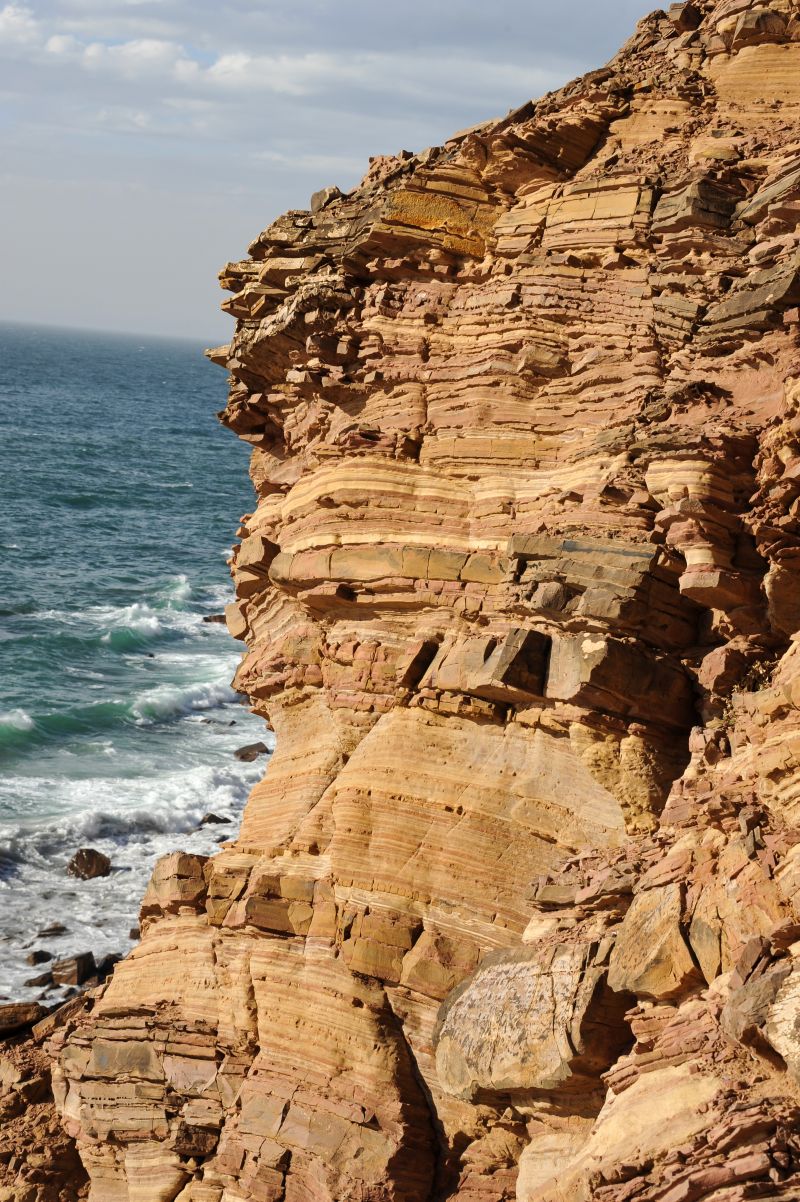
A remarkable fossil assemblage gets a new interpretation
A team of paleontologists recently discovered that an ancient seascape known for its diverse assemblage of exceptionally preserved fossils represents an unexpected oceanic setting, placing the fossils in an environmental context that is dramatically different from other fossil assemblages of the Cambrian age. The team published their findings in the journal, ScienceAdvances.
The team explored the Emu Bay Shale, exposed across a sea cliff in South Australia, and found its strata — the layers of material settled over time — were deposited in an energetic fan river delta at the edge of a tectonically active rift basin, which forms as two continents move apart from each other. These unique features mean gravel and cobbles were catastrophically deposited into the ocean by debris flows that originated on land.
"It’s not where you would expect to see delicate, soft-bodied creatures preserved," Robert Gaines, a professor at Pomona College, said. "The shale's unique setting hosted a diverse ecosystem with extraordinary fossil preservation, and now we know that the environmental setting exerted a strong influence on the structure of this early animal community."
These findings help to explain why the bottom-dwelling fauna was dominated by endemic species, likely inhabiting niche habitats, while swimming species that were unaffected by conditions on the seafloor include cosmopolitan forms seen elsewhere during the same time, like Anomalocaris — a large predator with acute vision and big claws. Emu Bay Shale fossils are associated with the Cambrian Explosion, which marked a massive jump in animal evolution over 500 million years ago that led to all the major animal groupings we have today.
The Emu Bay Shale and its more studied counterpart, the Burgess Shale in the Canadian Rocky Mountains, are Cambrian Lagerstätten, a German term noting well-preserved organic remains in a rock layer.
Before these findings, the research community debated whether the Emu Bay Shale represented a shallow or deep environment. The rift basin promoted the short-lived development of deep-water conditions regionally. Specific features associated with the fan river delta, like murky sediment-rich water, helped explain the lack of certain species, like sponges, which are frequently found in the Burgess Shale.
"At Emu Bay, we see a smorgasbord of sedimentary structure; it told us something different is happening there," Gaines said.


